Forget about Magic 8 Balls, tarot card decks, or even Siri and Google: The answers you’re looking for (at least as they pertain to public relations and the future of media) are right here in Cision’s latest State of the Media Report.
Now in its 15th year, our annual report is based on a survey of over 3,000 journalists worldwide. It seeks to address all your burning PR concerns, from the types of content journalists want, to their thoughts about artificial intelligence (AI), and what it takes for a pitch to grab their attention.
To coincide with the State of the Media Report, our webinar, Understanding Today's Media: Industry Insights from Top Journalists, sought to explore its findings and dive into the themes that emerged. The on-demand webinar is available to watch now, but if you're pushed for time we've pulled together some of the most common questions that emerged from it.
Burning PR Question #1: Why Don’t I Get Any Response From My Pitches?
There are a few possible reasons for this. According to the report, journalists are so inundated with pitches it’s getting harder for them to separate the wheat from the chaff. Fifty percent of those surveyed said they receive more than 50 pitches a week, while 15% of those get more than 150.
With inboxes flooded, there’s little time for them to review each pitch in depth, let alone respond. In fact, the vast majority say most pitches they get aren’t even appropriate for their audiences – three-quarters said they considered 25%, at most, to be relevant. Seventy-seven percent also said they may block a PR practitioner who spammed them with irrelevant pitches.
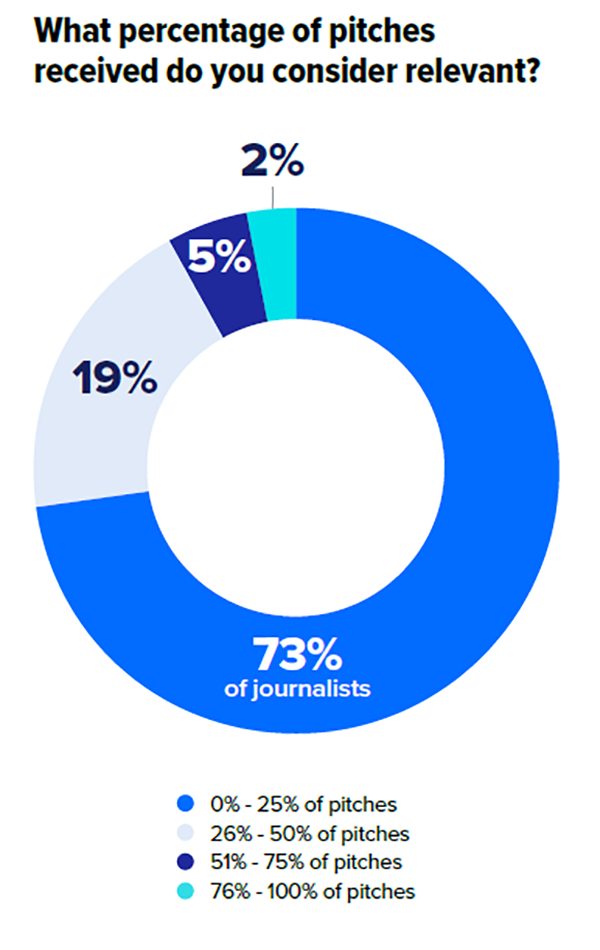
PR Tip: Make sure you’re targeting the right journalists for your story; otherwise, you’re just wasting your time and theirs. PR software like CisionOne Outreach can help here, and you may also want to check out our guide to building media lists.
Burning PR Question #2: Do Press Releases Even Matter to Journalists Anymore?
Yes, very much so! In fact, 74% said press releases and news announcements are what they most want to receive from public relations professionals. Moreover, 68% said they find press releases the most useful resource for generating content ideas (followed by 47% saying direct pitches).
Think carefully about the language you’re using in your press releases, too. If you’re working with generative AI tools like ChatGPT or Gemini, be wary that research has shown that AI models overuse certain words and phrases and can lead to a “sameness” in press release content.
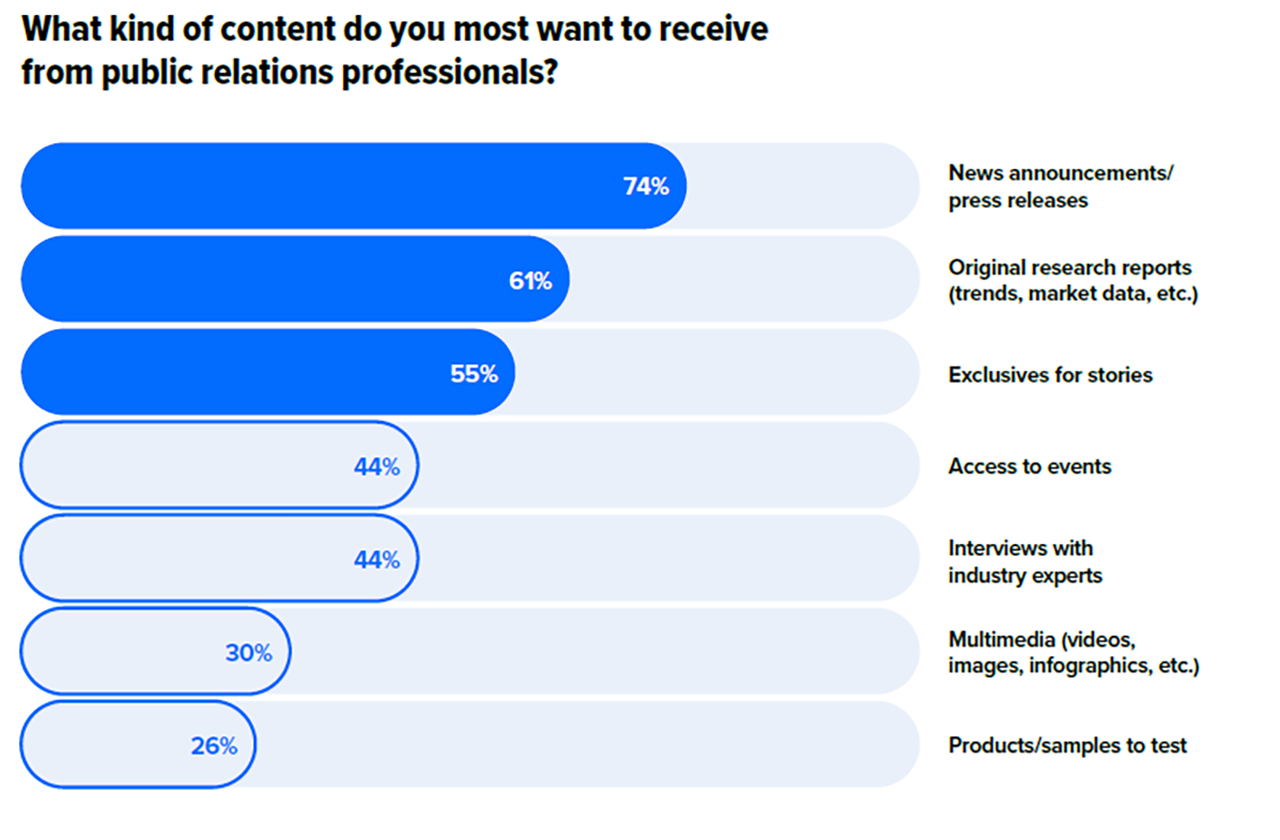
PR Tip: When crafting your press release or pitch copy, avoid words like “gamechanger,” “iconic,” “groundbreaking,” and “cutting-edge." These are among the words that make journalists want to hit delete if they see them in a press release or email headline.
Burning PR Question #3: How Do I Break Through the Noise to Get Journalists’ Attention?
In short, know your audience. Which means knowing their audience – and crafting pitches that reflect this understanding. When asked about the best way to make their jobs easier – in other words, removing obstacles that prevent them from covering your pitches – “understanding my target audience and what they find relevant” was the top answer, cited by 68% of respondents.
Do your homework to make sure you’re targeting the right journalists at the right outlets for the story, event or product you want them to cover. Then craft your pitch accordingly.
PR Tip: The more you show you understand what the reporter covers (and can anticipate what they’d be interested in covering next) the more you will stand out. As mentioned already, journalists are so overwhelmed with bad pitches they can’t help but notice the good ones.
Burning PR Question #4: What Are the Rules for Sliding Into a Reporter’s DMs?
With journalists being more active than ever on social media (97% use if for work-related purposes), it may be tempting to use it as an avenue to contact them, but don’t be so sure: Just 2% of journalists say they prefer to receive pitches via social media direct message.
Email is by far the best method of contact, with 87% preferring to get pitches directly to their inbox. Be wary of testing their patience, though. Only 8% told us it’s okay to follow up more than once, a sizable drop from the 17% who said the same in 2023.
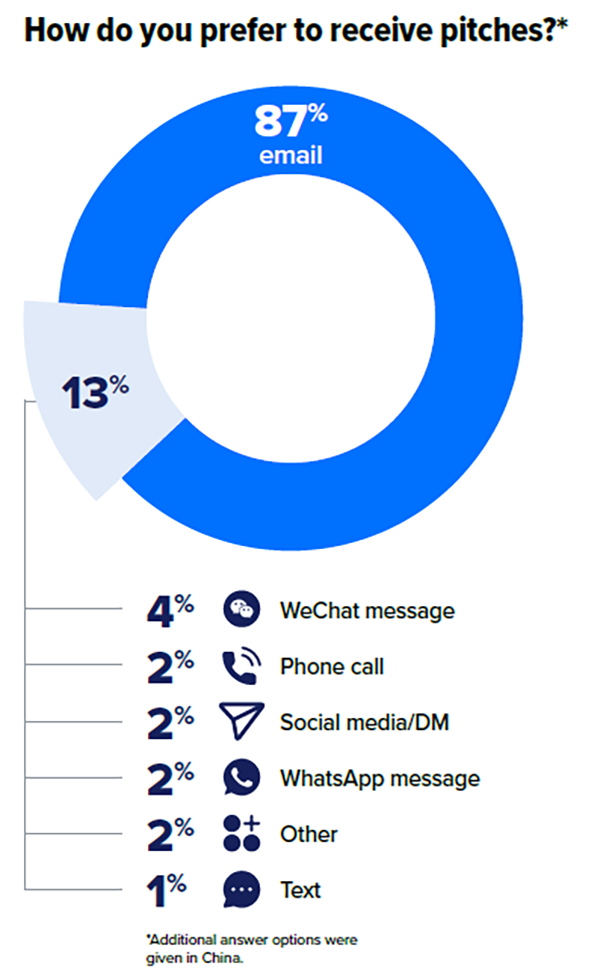
PR Tip: Don’t contact a journalist through social media unless you know for sure that’s their preference. However you choose to get in touch, most of the traditional rules of networking apply: know your audience, be polite, and be professional.
Burning PR Question #5: What Do Journalists Think About AI?
One in four reporters named AI as a challenge to journalism. However, nearly half revealed they are leveraging the technology in various ways – 23% are using it for research, while 19% utilize it to help create outlines or early drafts of content.
Though some journalists said that generative AI usage was banned in their work, early adopters said that it was helping them suggest headlines and captions, come up with SEO-friendly titles and meta descriptions, and transcribe audio.
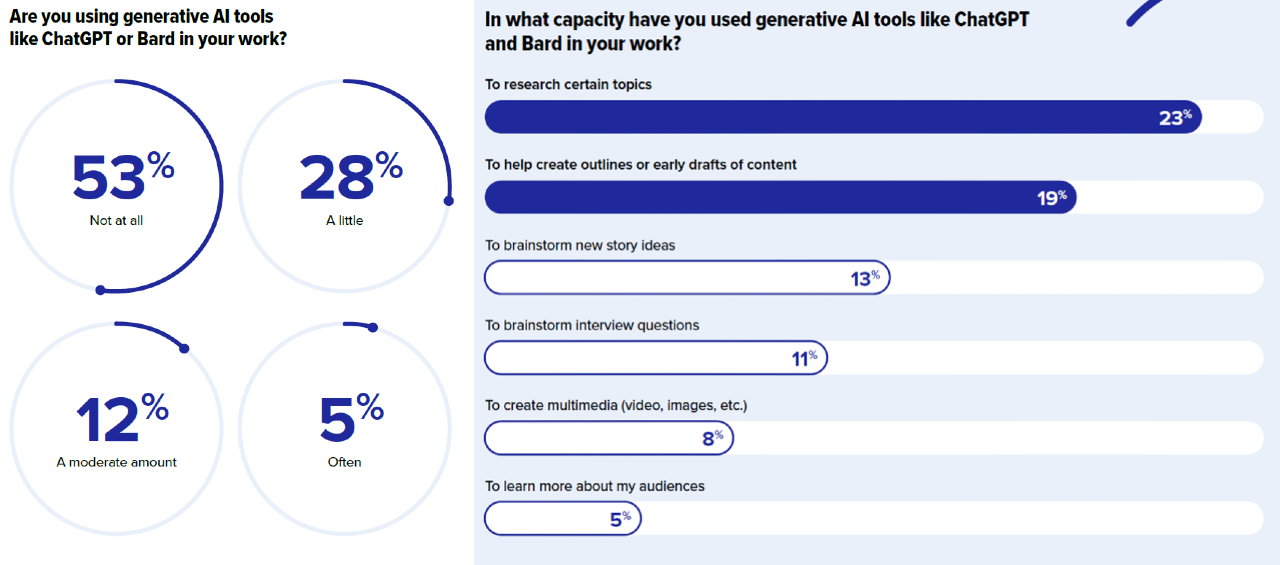
PR Tip: PR pros should note how journalists are leveraging AI and look to assist them in filling that gap. This might mean proactively providing audio transcripts of press conferences or interviews journalists attend, or giving them on-brand story ideas or assistance with multimedia creation.
Burning PR Question #6: What Do Journalists Really Want From PR Pros?
What does anyone want from the people they work with? To make their lives (and jobs) easier. For the report, Cision explicitly asked journalists how PR pros could make their lives easier.
The top answers: Understand their audience and what they find relevant, connect them with experts and spokespeople to conduct interviews, and provide data and key research.
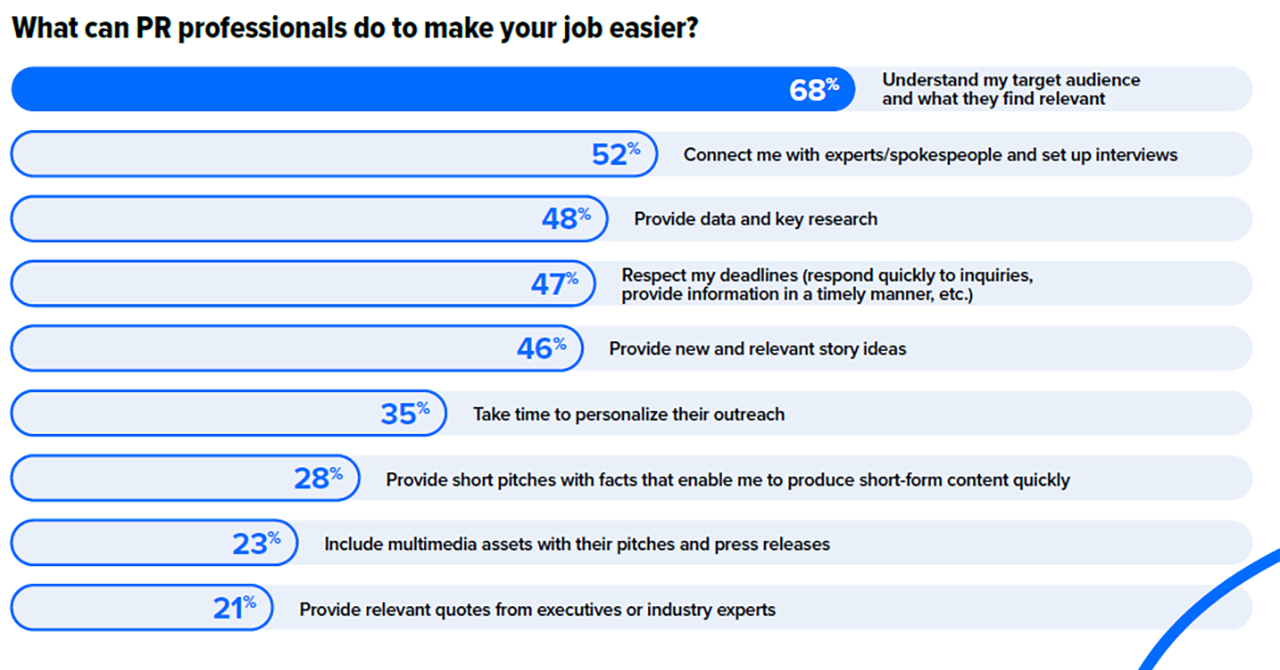
PR Tip: The easier PR teams make it for journalists to cover their stories, the more likely they are to do so. And the easier you are to work with, the more likely journalists will want to work with you again (and again), so take note of the many ways you can be of assistance.
The Bottom Line
In a nutshell, journalists need PR pros to exercise empathy and understanding when working with them. That includes everything from respecting their deadlines and responding quickly to their inquiries, to providing the assets, intel, and other resources they find value in.
With clearer insight into the challenges journalists face, PR pros can better serve their media partners and build strong professional partnerships that will serve them time and again.
For more findings and takeaways that will enhance your relationships with journalists, download the full 2024 State of the Media Report.
Find out how CisionOne Outreach can help connect you with the right journalists and influencers to share your stories, speak with one of our experts.
Most Recent Posts
Cision Resources
-
E-books and Guides
Comprehensive how-to guides on strategy and tactics
-
Case Studies
What are other brands doing – and how can we learn from them?
About Simon Reynolds
Simon is the Senior Content Marketing Manager at Cision. He worked as a journalist for more than a decade, writing on staff and freelance for Hearst, Dennis, Future and Autovia titles before joining Cision in 2022.
Learn More. Do More. demo new
PR Tips, Case Studies, and Product Updates
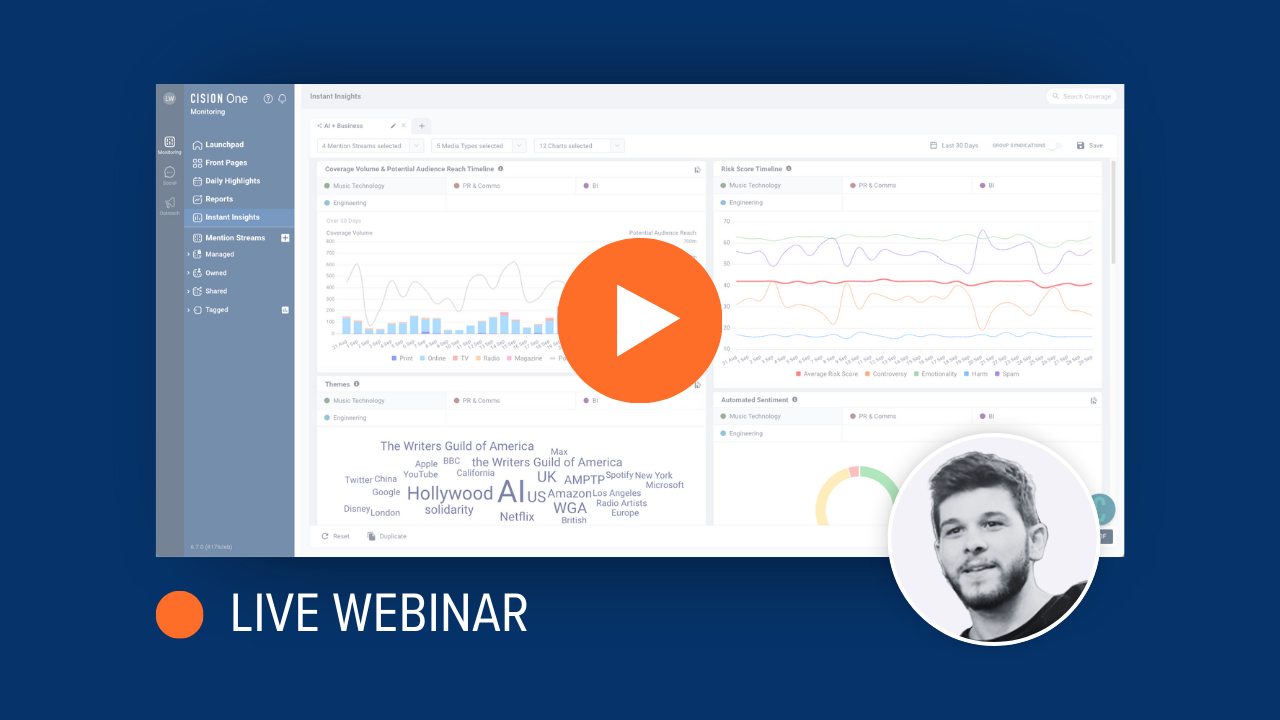
[On-Demand Webinar] The Next Generation of Media Intelligence: From Gorkana to CisionOne
Explore CisionOne, a revolutionary media intelligence platform, and the evolution of Gorkana. Learn key features and strategies from Luke Williams, CisionOne Product Marketing Manager. Elevate your media outreach to new heights!


